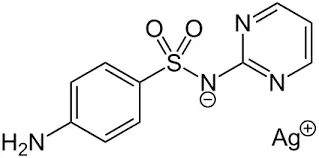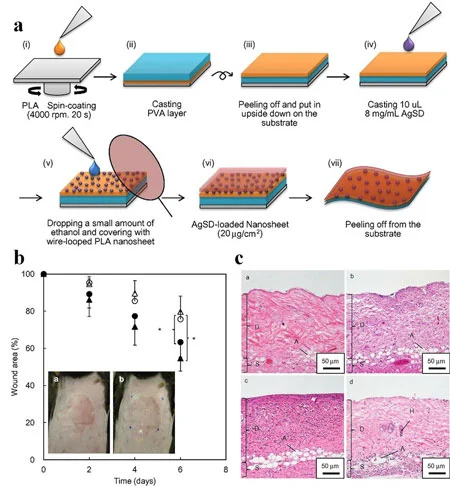Silver sulfadiazine powder is a topical antimicrobial specialist broadly utilized in the treatment of burns. It combines the antibacterial properties of silver with the antimicrobial impacts of sulfadiazine, making a effective definition that helps in burn mending and anticipates disease. This medicine is especially compelling for moment and third-degree burns, giving a defensive obstruction against destructive microorganisms whereas advancing the common recuperating prepare of the skin.
What are the main benefits of using Silver Sulfadiazine for burn treatment?
Silver sulfadiazine offers numerous advantages in burn treatment, making it a preferred choice among healthcare professionals. The primary benefits of using this medication include:
- Broad-spectrum antimicrobial action: Silver sulfadiazine is effective against a wide range of bacteria, fungi, and certain viruses. This broad-spectrum activity helps prevent infections in burn wounds, which are particularly susceptible to microbial invasion due to the compromised skin barrier.
- Formation of a protective barrier: When applied to the burn site, silver sulfadiazine forms a thin, protective layer over the wound. This barrier helps to keep the wound moist, which is crucial for optimal healing, while also preventing the entry of harmful microorganisms.
- Reduced pain and discomfort: The cooling effect of Silver sulfadiazine powder can help alleviate pain and discomfort associated with burns. This property not only improves patient comfort but also promotes better compliance with treatment.
- Ease of application and removal: Silver sulfadiazine cream is easy to apply and can be removed without causing additional trauma to the wound. This characteristic is particularly important in burn care, where frequent dressing changes are often necessary.
- Promotion of wound healing: While primarily known for its antimicrobial properties, silver sulfadiazine also supports the wound healing process. It helps in the formation of new skin cells and promotes the development of granulation tissue, which is essential for wound closure.
These benefits collectively contribute to faster healing times, reduced risk of complications, and improved patient outcomes in burn treatment. The effectiveness of silver sulfadiazine in managing burn wounds has been well-documented in numerous clinical studies, solidifying its position as a cornerstone in burn care protocols worldwide.
How should Silver Sulfadiazine Powder be applied to burn wounds?
The proper application of silver sulfadiazine powder is crucial for maximizing its effectiveness in burn treatment. While the specific instructions may vary depending on the extent and severity of the burn, as well as the healthcare provider's recommendations, here are general guidelines for applying silver sulfadiazine:
- Wound preparation: Before applying silver sulfadiazine, the burn wound should be gently cleaned with sterile saline or an appropriate antiseptic solution. Any loose or dead tissue should be carefully removed to ensure the medication can directly contact the wound surface.
- Application technique: Using a sterile glove or applicator, apply a thin layer (approximately 1/16 inch or 1.5 mm thick) of silver sulfadiazine cream directly to the burn wound. The layer should be thick enough to cover the entire affected area but not so thick that it prevents oxygen from reaching the wound.
- Coverage: Ensure that the cream covers the entire burn area, including any blisters that may have formed. However, avoid applying the cream to any unaffected skin surrounding the burn, as this can lead to unnecessary exposure and potential side effects.
- Dressing: After applying the cream, cover the treated area with a sterile, non-stick dressing. This helps keep the medication in place and provides additional protection to the wound.
- Frequency of application: In most cases, Silver sulfadiazine powder should be applied once or twice daily, or as directed by a healthcare professional. The frequency may be adjusted based on the wound's healing progress and the presence of any signs of infection.
- Duration of treatment:Proceed applying silver sulfadiazine as endorsed until the burn has mended or as coordinated by your healthcare supplier. The term of treatment can shift broadly depending on the seriousness and degree of the burn.
It's imperative to note that whereas silver sulfadiazine is by and large secure and compelling, it ought to as it were be utilized beneath the direction of a healthcare proficient, particularly for expansive or extreme burns. Additionally, a few safety measures ought to be taken:
- Avoid utilizing silver sulfadiazine on newborn children more youthful than 2 months ancient due to the chance of kernicterus.
- Be cautious when utilizing on huge ranges of the body, as systemic assimilation of silver may occur.Monitor for signs of unfavorably susceptible responses or skin aggravation, which, in spite of the fact that uncommon, can occur.
- Proper application and adherence to treatment rules guarantee that silver sulfadiazine can viably combat contamination, advance mending, and minimize scarring in burn wounds.
What is the mechanism of action of Silver Sulfadiazine in burn healing?
The mechanism of action of silver sulfadiazine in burn healing is multifaceted, involving both its antimicrobial properties and its effects on the wound healing process. Understanding this mechanism helps explain why silver sulfadiazine is so effective in treating burn wounds:
- Antimicrobial action: The primary mechanism of action of silver sulfadiazine is its potent antimicrobial effect. When applied to a burn wound, the compound slowly releases silver ions, which interact with bacterial cell walls and enzymes. This interaction leads to: These effects collectively result in bacterial cell death, effectively preventing or treating infections in the burn wound.
- Disruption of bacterial cell membranes
- Inhibition of bacterial DNA replication
- Interference with bacterial metabolism and respiration
- Broad-spectrum activity: Silver sulfadiazine is effective against a wide range of microorganisms, including: This broad-spectrum activity is particularly important in burn wounds, which are susceptible to various types of infections.
- Gram-positive bacteria (e.g., Staphylococcus aureus)
- Gram-negative bacteria (e.g., Pseudomonas aeruginosa)
- Fungi (e.g., Candida albicans)
- Some viruses
- Formation of a protective barrier: When applied to the burn site, silver sulfadiazine forms a thin, adherent layer over the wound. This barrier serves several purposes:
- Prevents further contamination of the wound
- Maintains a moist wound environment, which is crucial for optimal healing
- Reduces water loss from the wound surface
- Minimizes pain by protecting nerve endings
- Modulation of inflammatory response: Silver sulfadiazine powder has been shown to modulate the inflammatory response in burn wounds. It can:
- Reduce the production of pro-inflammatory cytokines
- Decrease neutrophil infiltration in the early stages of wound healing
- Help balance the inflammatory response to promote optimal healing conditions
- Promotion of wound healing:
Past its antimicrobial impacts, silver sulfadiazine effectively underpins the wound recuperating preparation through a few mechanisms:
Stimulation of keratinocyte multiplication and movement, advancing re-epithelialization
Enhancement of fibroblast work, supporting the arrangement of modern connective tissue
Promotion of angiogenesis, moving forward blood supply to the recuperating wound
Reduction of network metalloproteinase movement, which can offer assistance in avoiding tissue breakdown - Sustained release formulation: The cream formulation of silver sulfadiazine allows for sustained release of silver ions over time. This prolonged action ensures continuous antimicrobial protection and support for wound healing between dressing changes.
The combination of these mechanisms makes Silver sulfadiazine powder a highly effective treatment for burn wounds. By simultaneously combating infection, protecting the wound, modulating inflammation, and promoting healing processes, silver sulfadiazine creates an optimal environment for burn wound recovery. This multifaceted approach not only accelerates healing but also helps minimize scarring and reduce the risk of complications associated with burn injuries.
If you are also interested in this product and want to know more product details, or want to know about other related products, please feel free to contact iceyqiang@aliyun.com.
References
1. Atiyeh, B. S., Costagliola, M., Hayek, S. N., & Dibo, S. A. (2007). Effect of silver on burn wound infection control and healing: review of the literature. Burns, 33(2), 139-148.
2. Adhya, A., Bain, J., Ray, O., Hazra, A., Adhikari, S., Dutta, G., ... & Majumdar, B. K. (2015). Healing of burn wounds by topical treatment: A randomized controlled comparison between silver sulfadiazine and nano-crystalline silver. Journal of basic and clinical pharmacy, 6(1), 29.
3. Nasiri, E., Hosseinimehr, S. J., Zaghi Hosseinzadeh, A., Azadbakht, M., Akbari, J., & Azadbakht, M. (2016). The effects of Arnebia euchroma ointment on second-degree burn wounds: a randomized clinical trial. Journal of ethnopharmacology, 189, 107-116.
4. Genuino, G. A. S., Baluyut-Angeles, K. V., Espiritu, A. P. T., Lapitan, M. C. M., & Buckley, B. S. (2014). Topical petrolatum gel alone versus topical silver sulfadiazine with standard gauze dressings for the treatment of superficial partial thickness burns in adults: a randomized controlled trial. Burns, 40(7), 1267-1273.
5. Percival, S. L., Bowler, P. G., & Russell, D. (2005). Bacterial resistance to silver in wound care. Journal of hospital infection, 60(1), 1-7.
6. Argirova, M., Hadjiski, O., & Victorova, A. (2007). Non-silver treatment vs. silver sulfadiazine in treatment of partial thickness burn wounds in children: a systematic review and meta-analysis. Acta paediatrica, 96(4), 519-522.



